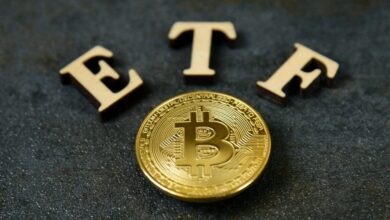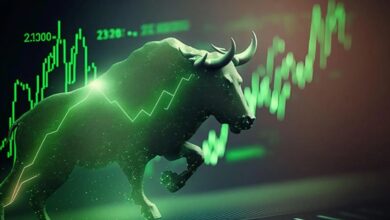
Bitcoin Traders Losing Hope: Top Trader Metric Falls Two Weeks
Bitcoin Traders Losing Hope. While the cryptocurrency was trading near $72,000 on June 7, its intraday gains promptly vanished, causing it to drop to $69,000. Investors in Bitcoin BTC $69,512 are growing pessimistic, according to two indications, one of which is the long-to-short statistic of exchanges’ top traders. Is the Bitcoin bull market, for the time being at least, over?
Bitcoin and Gold Fell Amid the S&P 500 Record High
Following news that the US added 272,000 nonfarm payroll employment in May, well above April’s 165,000, the S&P 500 index hit a fresh intraday record high on June 7. Companies listed on public markets benefit from a robust labor market because it boosts consumer spending and credit. In a strong labor market, consumers are more inclined to spend, cost of capital is damned.
With the participation rate of prime-age workers, ages 25–54, reaching its highest level in 22 years at 83.6% and wages increasing by 0.4% from the previous month, the relationship between job creation and corporate earnings is exceptionally favorable. On June 7, consumer goods equities in the US fell, but technology stocks more than made up for it.
According to Yahoo Finance, Citi’s senior global economist, Robert Sockin, said the likelihood of a recession increases as the US Federal Reserve maintains interest rates above 5.25%. However, the latest US unemployment numbers show no sign of impending danger; the rate is already at 4%. In a move from 69% the day before, investors are now pricing in a 51% chance that the Fed will lower rates by September, according to the CME FedWatch Tool.
The negative impact of the macroeconomic data and investors’ lowered expectations of interest rate cuts extended beyond Bitcoin and into other asset classes. Bitcoin Traders Losing Hope: After teasing $2,390 in the wee hours of June 7, gold crashed to $2,300. Also, during that time, the yield on two-year U.S. Treasury bonds increased from 4.74% to 4.87%, suggesting that investors are selling their fixed-income holdings.
The giant U.S.-listed corporations had $3.6 trillion in cash and equivalents, so, unsurprisingly, Bitcoin fell after gold and fixed-income as the stock market decoupled. These assets can be used for stock buyback programs or to earn returns on money market funds. If company profits take a hit, it won’t have nearly as significant an effect on the price as other assets.
Also Read: What is a Liquidity Crisis, and What Does It Mean for Crypto Investors?
Bitcoin Top Traders Cut Bullish Bets
It is possible to learn how the rejection of the $72,000 price resistance has impacted whales’ emotions by looking at data from the Bitcoin futures markets. The top traders’ long-to-short ratio consolidates positions across spot, perpetual, and monthly futures contracts. Professional traders are likelier to have long (buying) contracts when the ratio is high and short (selling) contracts when it is low.
The current long-to-short ratio at Binance is 1.35, less bullish than last week’s May 31 reading of 1.58, which was bullish for longs. Also, the long-to-short ratio for OKX has dropped from 1.79 to 1.22, indicating that top traders are currently less bullish than they were on May 31. Despite a worrying decline to the indicator’s lowest level over the past two weeks, absolute terms still favor optimistic wagers.
Nevertheless, alternative measures reveal a little uptick in demand from regular traders, such as the premium for stablecoins in China. The stablecoin premium might reach 1.5% in bull markets while it drops in bear markets.
Ignoring the June 7th Bitcoin price drop, China’s USD Coin (USDC) premium has remained slightly above the 1% neutral barrier. One positive aspect for bulls is that retail traders and whales are not selling out in a frenzy. These numbers provide credence to the theory that once the $69,000 support level is tested, the long-to-short rate among Bitcoin’s top traders will improve.







